As a rat owner, I understand how difficult it is to find a toy that keeps your critter engaged for a significant amount of time. Small animals need to have interesting objects and activities to keep their brains active and boost their mental health. There are a lot of commercial toys out there for small pets that can be used inside of a cage or out in the play space, even some bird toys are suitable for certain situations, but in this age of Facebook DIY videos and Pinterest home crafting boards, rodent toy ideas are taking a dangerous turn.
When you pick up a toy at the store, you can be fairly certain that the item is made with parts that will be safe for your rat or other small animal. Of course, there have been one or two exceptions (I never recommend the Snack Shack chew toy to any rat owner, as it has caused illness and death in some animals) and you should always read the labels and follow all care instructions, but generally, a pet owner can assume that purchased toys are the safest way to play. Unfortunately, these toys can be costly, especially if your resources are limited and the pet stores in your area offer a small variety. The solution to providing a little extra fun is to repurpose something from around the house, turning it from trash into treasure.
While some of the do-it-yourself items found online are perfectly safe, many that are floating around the internet these days contain dangerous or toxic elements that should NOT be used in small animal toys. In this article, I have decided to take a look at some of the most popular DIY items floating around in your feeds.
Homemade Houses
It is becoming a fad these days to create houses for rats out of massive amounts of popsicle sticks or old t-shirts glued to cardboard boxes. The issue here isn’t the item you are creating these houses with, it’s the way you are holding them together.
WARNING: Do NOT, I repeat, DO NOT follow any online video instructing you to use glue or tape when you make one of these for your rat or other small animal! Tape and glue are dangerous even if you think you are putting them where your pet can’t reach. These critters are chewers and can easily chew through cardboard to get to tape or glue on the other side.
All of the houses that I have seen online contain toxic glues that are NOT safe for consumption by your furry friends, most especially the ones made with HOT GLUE. I checked with our vet on this and he emphatically agreed with me. According to Dr. Smith, who has been a reference for our small animal articles in the past, there are NO commercial glues that are completely safe for your small pet. And, of course, tape is a choking hazard.
Work Around: If you want to make a house for your rat, ask around for people to give you old boxes, cut holes in them, and connect them together WITHOUT tape or glue. Typically, our family uses tissue boxes with the plastic cut out, old packing boxes and shipping tubes, empty shoe boxes, or anything else made of paper or cardboard. When making your house, remember not to use glue or tape and to remove any plastic or tape materials from the boxes before use. It is probably possible for someone who is super crafty to find a way to tie sticks together with string or twine for a nice house, but any of the glued houses should be completely avoided.
Conclusion: Ignore the Facebook popsicle house video completely, and alter the t-shirt and coat hanger cat house design by simply not using the tape. It may be a little less stable, but you won’t catch your rats chewing on something dangerous. Also with the cat house, make sure to regularly check the coat hanger edges that might cause dangerous cuts if they become exposed due to chewing of the cardboard base.
Paper Tube Games
There are a lot of things you can do with toilet paper tubes. If you have enough of them, you can make food-seeking mazes by providing a large number of tubes, with only a few holding a treat. You can do this by standing them on end and watching your rat bowl them all over in their search, or by leaving them flat, which takes more space. Others use the tubes as treat logs, stuffed with scrap paper and some goodies that their pet has to chew through in order to find their reward.
WARNING: Other than requiring supervision to be certain that a large rat doesn’t get stuck in these tubes, tube games are basically safe. There are three rules to follow with these home made toys, regarding adhesives and hanging. These rules apply regardless of what project you follow.
The first rule is the same as above, DO NOT use glue or tape for any reason. Your pets will be chewing on these, and that can be very dangerous.
Second in the list of rules, is the use of yarn. This is dangerous for your small pet because yarn isn’t good for your rats to chew and their nails can catch in it too easily, causing major injury to their toes.
Finally, there are many people out there who use shower curtain hooks to attach their toys to their rat cages. Some of these are safe, but most can cause deep gashes or death if they accidentally pop open and the hook catches on any part of your rat’s body.
Work Around: If you see a project claiming you have to use yarn, find string or twine and use that instead. If you want to hang your toy in the cage, you can use twine for that too, or repurpose the clip of a toy purchased from the store.
Conclusion: These are fun and safe, as long as you think carefully about what it is you are making. Supervision is always the best policy when it comes to toys of any sort, but these are some of the easiest, most stress free things you can make. The simplest way to give your rats fun is just to fold the tube shut on both ends and let them go to town chewing and pulling at the paper you stuffed inside to get their one special reward.
Dig Boxes and Ball Pens
It is natural for your small pet to want to dig around because, in the wild, they forage for their food. Dig boxes are obviously more useful to some small pets than others, but most have a lot of fun with these types of toys. Most pet owners use a set of plastic drawers, filling the bottom one with dirt, the middle one with plastic Easter eggs and the top one is left empty to remove for water play or is used as toy storage. Before you make any type of play container like these, be sure to ask your vet if what you want to do is safe for the health of your little one.
WARNING: DO NOT use dirt or sand that has been chemically treated or could contain insects. You MUST use sterilized soils that contain NO pesticides or fertilizers. For sanitation reasons, the poop should be scooped as soon as you see it and the soil should be changed once a week. If your pet shows ANY signs of a respiratory issue, stop the use of your dirt dig box immediately and see the vet. Dirt and sand dig boxes can cause respiratory distress in any small animal that already has a breathing issue.
Some people grow edible grasses in the soil for the rats to play in. If you chose to do this, ASK YOUR VET what would be best for your pet. If you decide to scatter treats or seeds to encourage the foraging behavior, use these things sparingly, as too much can cause dietary or intestinal problems.
If you are creating a ball pen, use ONLY plain plastic eggs with no glitter, paint, or other decoration. ALWAYS check the eggs for cracks that could hurt your pet and try to prevent chewing on the plastic whenever possible.
Work around: There aren’t any real work around needs with dig boxes and play pens. The most important thing to do when it comes to do it yourself play spaces is to ask your vet for advice BEFORE creating one. That way you can be certain that you are using items that are right for your pet’s specific needs. If your pet can’t have one with dirt, try the eggs instead.
Have Fun!
The most important thing about DIY toys is that you, the pet owner, are responsible for the safety and well being of your small fur buddy. If you find something new and exciting, but aren’t sure about the risks involved, contact your vet. They can easily tell you if your idea needs altering to suit your pet’s needs.
Play time with your pets should be as entertaining for you as it is for them and creating your own toys based on the interests of your animal can be a fun way to get involved with their training and promote natural behaviors that stimulate mental health. Have fun creating, keep safety in mind, and you and your pet should enjoy hours of entertainment together.
Dr. Jason Smith attended Rider University in New Jersey where he earned his undergraduate degree in Cellular and Molecular Biology with a minor in Chemistry. He then attended the University of Illinois College of Veterinary Medicine, where he graduated with his Doctorate in Veterinary Medicine in 2005 with honors. He enjoys all aspects of small animal medicine and surgery and has medically and surgically treated dogs, cats, rabbits, ferrets, guinea pigs, rats, prairie dogs, chinchillas, hedgehogs, hamsters, mice, gerbils and pot bellied pigs. He currently practices at both Timberlyne and Legion Road Animal Clinics in Chapel Hill, North Carolina.
Mirrani Houpe, our Small Animal Editor, has had rats since she took home her first little boy once they both completed the second grade. Since that time she has owned, rescued and bred many kinds of rats, from many backgrounds. She may not be a vet, psychology major, or scientist, but her babies have her very well trained when it comes to how to care for them. She is constantly working with her family’s veterinarian to come up with new and innovative ways to love and care for the most often misunderstood rodent in the pet world. You can e-mail her at mirrani@yourpetspace.info.

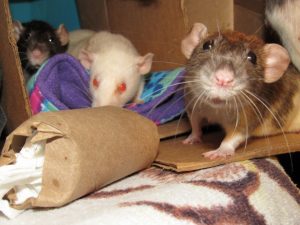
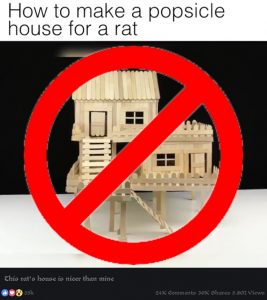
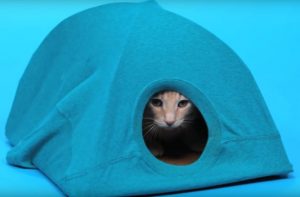
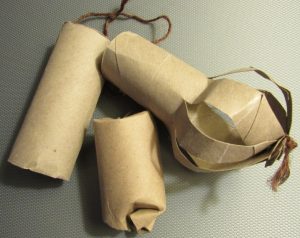
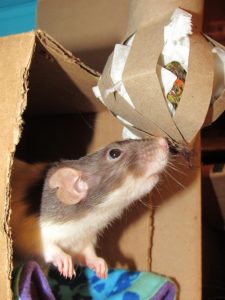
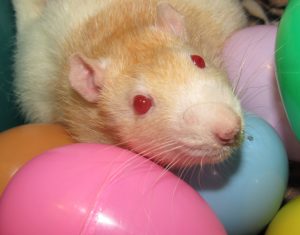
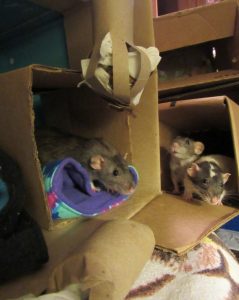

I’ll have to try the toilet paper tubes, cheap and fun is my idea of time spending.
Currently I’m playing with homemade hammocks made from old clothes.
You get a piece of fleece or other material a little more than the width you want, and about twice the length, then fold in half with the soft side inside. Machine most of the way around and sew up the hole after turning right side out.
And I can vouch these hammocks are even better then the shop bought ones.
We love repurposing old clothes and soft things. I know you didn’t mention it, but I should note not to repurpose towels for anyone reading who isn’t aware that rats toes can get caught up in the loops of the fabric, which can cause serious injury.